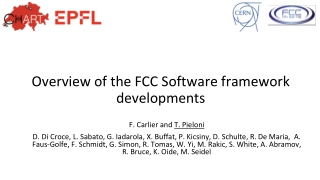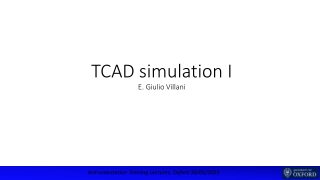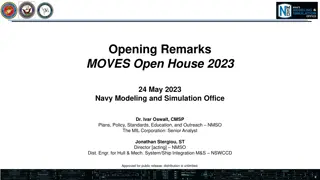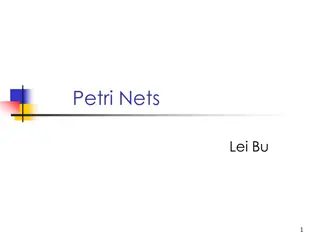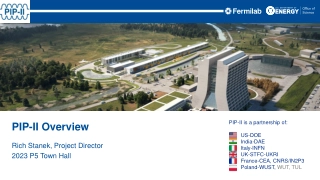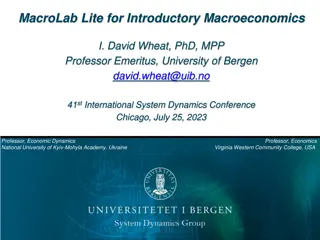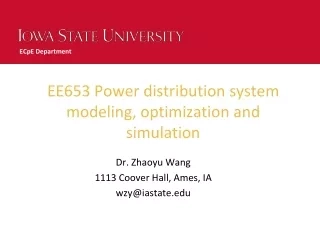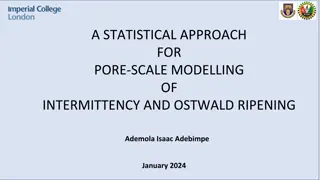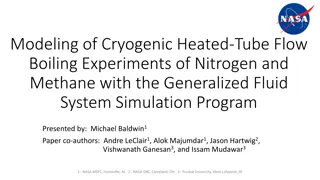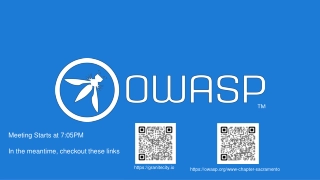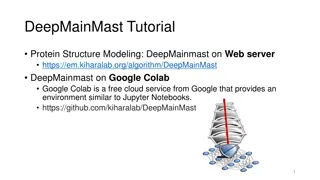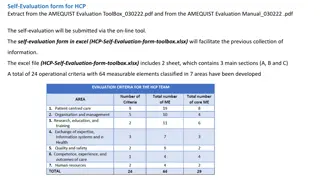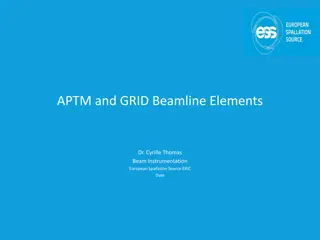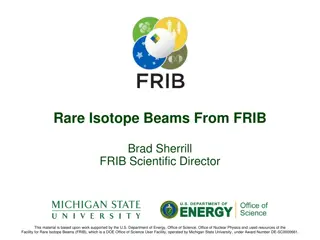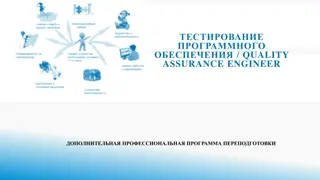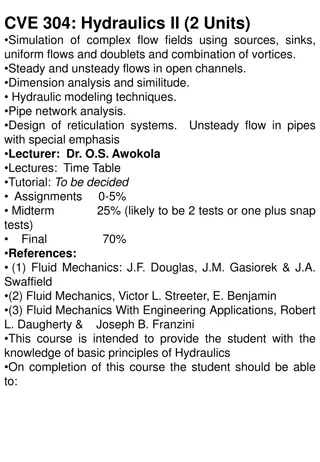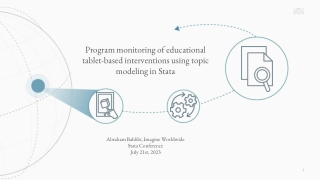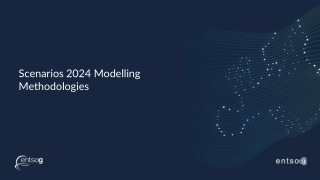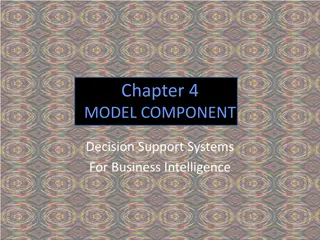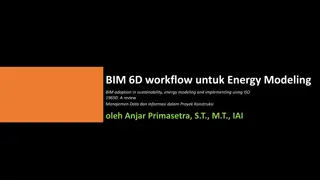Evaluating PyORBIT as Unified Simulation Tool for Beam-Dynamics Modeling
PyORBIT is an open-source code developed for SNS at ORNL with features such as multiparticle tracking, space charge algorithms, and MPI integration. It addresses the shortcomings of current simulation approaches by providing a Python API for advanced data analysis and visualization. Alternative solutions include developing a new framework or extending existing codes like Open XAL. PyORBIT has been ported to Python 3 for compatibility and improved build mechanisms.
Download Presentation
Please find below an Image/Link to download the presentation.
The content on the website is provided AS IS for your information and personal use only. It may not be sold, licensed, or shared on other websites without obtaining consent from the author. Download presentation by click this link. If you encounter any issues during the download, it is possible that the publisher has removed the file from their server.
Presentation Transcript
EVALUATING PYORBIT AS UNIFIED SIMULATION TOOL FOR BEAM-DYNAMICS MODELING OF THE ESS LINAC C. Zlatanov, J. F. Esteban Mu ller, Y. Levinsen, N. Milas European Spallation Source ERIC, Lund, Sweden A. Zhukov, A. P. Shishlo ORNL, Oak Ridge, Tennessee, USA 2023-10-10 HB2023
Current status of beam-dynamics simulations at ESS TraceWin: for precise offline simulations Envelope model Multiparticle tracker Feature-rich Graphical user interface Open XAL: for fast simulations and control room beam-physics applications Online envelope model EPICS integration Java and JavaFX for user interfaces 2023-10-10 J. F. ESTEBAN MU LLER - HB2023
Shortcomings of this approach We need to maintain 2 sets of lattice files TraceWin can t easily be extended and is closed source Users of the simulation framework would prefer a Python API to exploit its advanced data analysis and visualization libraries We want to be able to simulate synchrotrons for other projects We have been assessing the option to use one code for all beam-dynamics simulations 2023-10-10 J. F. ESTEBAN MU LLER - HB2023
Alternative solutions Develop a new framework from scratch Estimated effort ~2-3 person-year Extend Open XAL with a multiparticle tracker and good Python bindings Java performance limitations Find an existing code that fulfills at least partially our requirements and that can be extended Simplest solution if we find a good match 2023-10-10 J. F. ESTEBAN MU LLER - HB2023
PyORBIT Open-source code written in Python and C++ Developed for SNS at ORNL Features: Multiparticle tracker for linacs and synchrotrons 3 different algorithms for space charge Numerical integrator for tracking particles under arbitrary electromagnetic fields Routines for beam-coupling impedance and beam-matter interaction MPI integration for parallel computing 2023-10-10 J. F. ESTEBAN MU LLER - HB2023
Porting to Python 3 Existing version: Compatible only with Python 2.7 (or older), deprecated in 2020 Complicated build system: users need to compile a Python interpreter that loads PyORBIT library as builtin modules We released a new version on https://github.com/PyORBIT-Collaboration/pyorbit3 Ported PyORBIT to Python 3 Improved build mechanism: can generate a pip wheel for simpler deployment 2023-10-10 J. F. ESTEBAN MU LLER - HB2023
Lattice description (files) PyORBIT supports MAD-X, SAD, and a custom XML format We are exploring the option to generate our lattice in Python Pros No need to learn a new syntax Cons Every time lattice is modified may require reinstalling the pip package Can programmatically describe machine sections, auto-generate signal names for integration with the control system, etc. Switching between different lattices at runtime can become more cumbersome Takes advantage of IDE features such as auto-completion, syntax highlighting, error detection, and display documentation Deployment via pip 2023-10-10 J. F. ESTEBAN MU LLER - HB2023
Lattice description in Python Example 2023-10-10 J. F. ESTEBAN MU LLER - HB2023
Benchmark against TraceWin ESS linac from MEBT to DTL tank 4 3D space-charge model (Poisson solver) Same initial distribution (~106protons) Design parameters Small differences probably due to different meshing strategies in the space-charge solver 2023-10-10 J. F. ESTEBAN MU LLER - HB2023
Envelope tracker Purpose: fast simulations for control room applications and quick analisys Prototype including RF cavities and quadrupoles No bends, no space-charge (yet) Almost perfect agreement Runtime ~10 ms (multiparticle ~4 min) 2023-10-10 J. F. ESTEBAN MU LLER - HB2023
Control system integration EPICS The ESS control system is based on EPICS We developed a PyORBIT extension to add EPICS PVAccess support based on p4p Code at https://gitlab.esss.lu.se/ess-crs/pyorbit-epics 2023-10-10 J. F. ESTEBAN MU LLER - HB2023
Summary and future steps PyORBIT fulfills our requirements for beam-dynamics simulations for both offline and online applications Good agreement with our current models Only reasonable amount of software development required Plan: More exhaustive benchmark (with misalignments, mismatches, etc.) Complete implementation of envelope tracker (bends, space-charge) Finish EPICS integration (diagnostics) Study GPU optimization of multiparticle tracker UI framework 2023-10-10 J. F. ESTEBAN MU LLER - HB2023
Thank you! 2023-10-10



